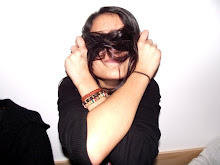Above is my evaluation presentation which analyses and evaluates the different elements of my music magazine and the reasons behind my decisions.
I thought that it went well as I addressed each question and I developed my ideas to back up each question and my points. I feel that I could have added evidence from existing music magazines to show the different conventions used and developed but to also give evidence to demonstrate the
similarities and differences between my music magazine and existing magazines.










